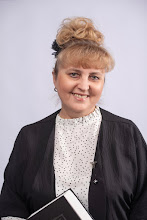Общая тема: “Man the Creator”
Тема урока: "Изобразительное искусство в нашей жизни"
Цель урока: приобщение к искусству живописи
Задачи урока:
1. Совершенствование навыков аудирования;
2.Совершенствование лексических навыков;
3. Развитие коммуникативных навыков;
4. Расширение кругозора;
5.Развитие познавательного интереса;
6.Развитие интереса к изучению английского языка.
Today we are going to “visit” virtual picture gallery.
Let’s watch the video.
1. Do you like art?
2. Do you like the painting of Renaissance period?
3. Do you like modern art?
4.How often do you visit art galleries or art exhibitions?
Read the text "Old and New Art", look at the reproductions of the famous paintings and decide which picture belongs to:
a) Abstract art
b) Romanticism
c) Cubism
d) Expressionism
e) Impressionism
f) Classicism
g) Realism
Old and New Art
When artists create their works they follow different tendencies, art movements and styles. When you examine paintings belonging to different periods you can see how ideas about art have changed over time. Classical works of art are connected with or influenced by the art of ancient Greece and Rome. They possess such qualities as balance, regularity and simpleness of form.
In Europe in the 18th century Classicism was the quality of being simple, balanced and controlled, not giving way to feeling and following ancient models in contrast to Romanticism and Realism. In European art in the late 18th and early 19th centuries there appeared a group of artists who followed their feelings and emotions rather than logical thought or reason, and who preferred wild, natural beauty to things made by man. Realism followed Romanticism in the 19th century. Realistic paintings showed things as they really are, as they appear to most people. In the 20th century there appeared such art movements as Impressionism, Surrealism, such styles as Cubism and Expressionism.
Impressionism was founded in France in the 1870s by Claude Monet and his friends. They painted outdoors and developed a sketchy, "impressionistic" style, trying to capture the changing effect of natural light. For example George Seurat painted his pictures in his own particular way, following new scientific ideas about how we see light and colour. His pictures are made up of thousands of coloured dots. But from a distance the dots seem to merge together and form new colours. Seurat believed these colours would appear brighter and more vivid, because the mixing is done not with paint but with light in the viewer's eyes. One of his fellow artists described the technique as "painting with jewels". It became known as Pointillism.
Surrealism appeared in the 20th century. Salvador Dali and Ren£ Magritte were famous surrealists. In their works they used strange dreamlike images.
Pablo Picasso was born in 1881 in Spain but lived mostly in France. He became one of the most famous modern artists, working in many different styles — from delicate pastels to striking Cubist scenes where he wasn't trying to create lifelike pictures. He wanted to draw attention to the problems involved in turning a real, 3-D scene into a flat, 2-D painting. So he distorted space and broke things up into angular shapes. This style became known as Cubism.
At the beginning of the 20th century in Germany there developed a style known as Expressionism. Expressionist artists use exaggerated shapes and colours to try to convey feelings, as in the works of Edward Munch. Abstract art became popular in the 20th century. It doesn't mirror real people or things, but is an arrangement of shapes and colours.
Зарядка для глаз и разминка.
Watch the butterfly.
Now listen to the text “Famous Artists” and match who of them:
a) worked not only in the field of visual arts;
b) was born, worked and died in the 17th century;
c) made frescoes for one of the famous Catholic churches;
d) didn't like to paint in his studio;
e) couldn't earn money selling his pictures.
Complete the text with
the derivatives forms from the words.
Start the presentation.
You'll find you hometask there.
Answer these questions.
The lesson is over. Thank you.
Ресурсы
https://www.youtube.com/watch?v=Q46vIlD8MzI живопись и акварель

Комментариев нет:
Отправить комментарий